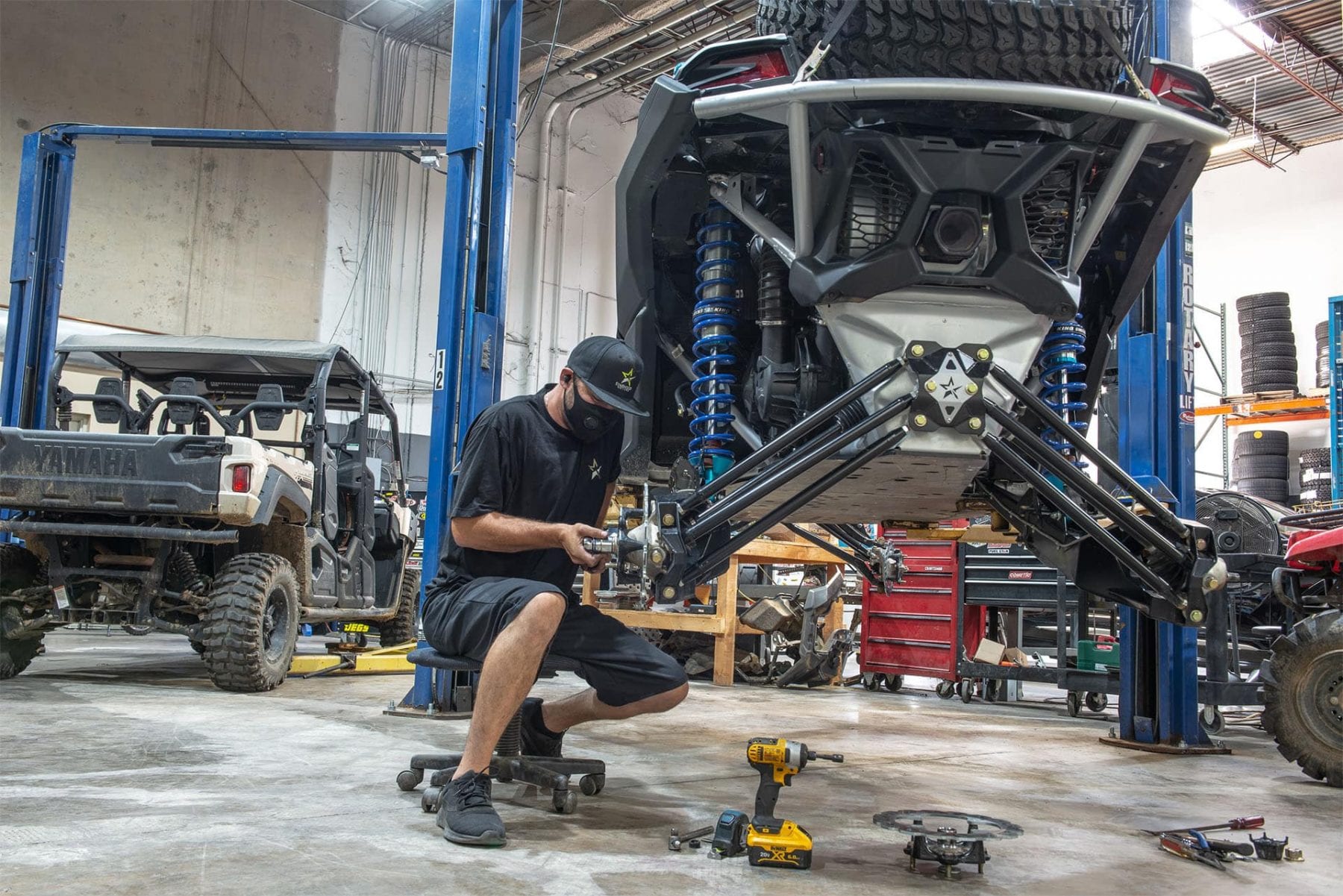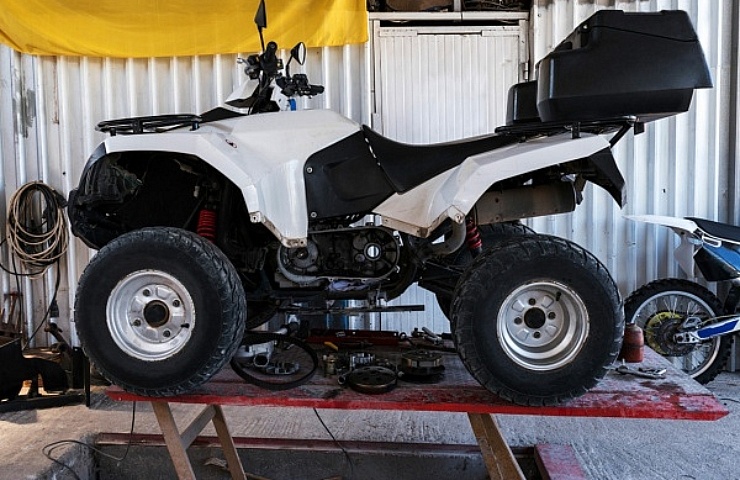ATV Fanatics Unite: Dive into the Heart-Pounding World of Off-Road Happiness
Wiki Article
ATV Riding Techniques: Understanding the Art of Off-Roading

Body Positioning
To effectively browse through tough off-road surface, it is vital for ATV cyclists to constantly keep proper body placing. Maintaining the appropriate body placement while riding an ATV not only improves control and stability however additionally makes sure the motorcyclist's safety. By embracing the appropriate body placing strategies, cyclists can successfully disperse their weight, enhance their equilibrium, and decrease the risk of injuries or crashes.One key aspect of correct body placing is keeping the feet on the foot pegs. Putting the feet on the foot pegs enables the motorcyclist to keep security and control over the ATV. The biker's knees ought to be a little curved, supplying a mild suspension to keep and absorb shocks balance. Furthermore, the motorcyclist's upper body must remain unwinded and flexible, enabling quick and smooth activities when necessary. This consists of keeping a light grip on the handlebars to keep control without too much pressure.
Furthermore, the biker's eyes need to always be focused in advance, checking the surface and preparing for any type of challenges or changes in the trail. By preserving an ahead stare, cyclists can make split-second decisions and respond properly to testing surface.
Throttle Control
Building upon the value of correct body positioning for ATV motorcyclists, mastering throttle control is a critical skill that allows riders to effectively maneuver with different off-road surfaces. Strangle control describes the capacity to manage the quantity of power provided to the ATV's engine. By recognizing how to manipulate the throttle, motorcyclists can make certain a smooth and regulated acceleration, allowing them to navigate obstacles with accuracy.Abrupt or jerky motions can cause the ATV to lose grip or come to be unpredictable, making it tough to keep control. This technique enables the ATV to preserve a constant speed and gives much better traction, decreasing the threat of accidents.
Along with smooth inflection, cyclists should likewise find out how to balance the throttle with other riding strategies, such as body positioning and stopping. When climbing up high hillsides, cyclists need to use adequate throttle to preserve energy without subduing the ATV or triggering wheel spin. In a similar way, when coming down high slopes, bikers ought to use the throttle in combination with proper body placing and stopping to keep control and prevent the ATV from sliding or tipping over.

Braking Techniques
An essential element of ATV riding methods is grasping effective stopping strategies. Understanding just how to brake correctly can make a substantial difference in your safety and control over the vehicle when it comes to off-roading. One of the most crucial stopping methods is using the front brake more than the rear brake. The front brake gives most of the stopping power, so it is crucial to use it judiciously. It is important to keep in mind that extreme stopping with just the front brake article can trigger the ATV to pitch forward, possibly leading to loss of control or even flipping over. Therefore, it is suggested to use both brakes concurrently, yet with more stress on the front brake. One more crucial technique is to stay clear of securing the wheels while braking. Locking the wheels can cause skidding, making it tough to keep control. To stop this, press the brake levers slowly and launch them a little if you feel the wheels securing. By grasping these braking strategies, you can improve your ATV riding abilities and make certain a secure and satisfying off-roading experience.Cornering Methods
One essential element of understanding ATV riding strategies is understanding effective cornering methods. Catching on an ATV can be challenging, yet with the right strategies, motorcyclists can browse turns safely and successfully. The secret to successful cornering is to keep control of the ATV while making the most of traction and reducing the danger of toppling.To implement an appropriate cornering strategy, riders should come close to the turn at an ideal speed, guaranteeing they are not going also slow-moving or as well fast. It is vital to shift the body weight in the direction of the within the turn, leaning right into it to maintain balance and stability. This aids to counterbalance the centrifugal pressure and keeps the ATV upright.
Furthermore, motorcyclists ought to keep their eyes concentrated on the exit factor of informative post the turn as opposed to the instant course in advance (ATV). This permits smoother and a lot more exact steering, as it assists the motorcyclist anticipate any type of barriers or adjustments in terrain
Additionally, proper throttle control plays a considerable role in cornering. Riders should regulate the throttle efficiently, avoiding abrupt velocities or slowdowns, which can trigger loss of control.
Uphill and Downhill Riding
When navigating off-road surface, ATV bikers should grasp the methods for uphill and downhill riding to keep control and make certain safety. Uphill riding calls for a combination of balance, throttle control, and weight circulation. As bikers rose you could try these out high inclines, they should lean onward to move their weight in the direction of the front of the ATV, which enhances traction on the front wheels and protects against the lorry from turning backward. ATV. In addition, maintaining a regular throttle and avoiding sudden acceleration or slowdown assists to stop the ATV from losing momentum or obtaining stuck. Downhill riding, on the other hand, calls for motorcyclists to lean back and change their weight in the direction of the back of the ATV. This aids to keep stability and prevent the automobile from flipping ahead. It is important to make use of the brakes sparingly and use them gradually to prevent locking the wheels and blowing up. Moreover, bikers must select the course with the least challenges, as browsing downhill can be more tough as a result of the raised rate and minimized grip. By mastering the strategies for uphill and downhill riding, ATV riders can with confidence deal with numerous off-road surfaces and delight in a risk-free and electrifying experience.Conclusion
Finally, grasping the art of ATV riding needs a combination of body positioning, throttle control, braking strategies, and effective cornering. Uphill and downhill riding also require specific abilities to navigate securely. By executing these techniques, cyclists can improve their off-roading experience and enhance their general control and safety and security on the ATV.ATV Riding Techniques: Mastering the Art of Off-Roading is an extensive guide that delves into the ins and outs of understanding the abilities needed for off-road ATV riding. Whether you are a newbie or a skilled biker, ATV Riding Techniques: Grasping the Art of Off-Roading provides essential guidance to assist raise your off-road ATV riding skills to the next degree.

Report this wiki page